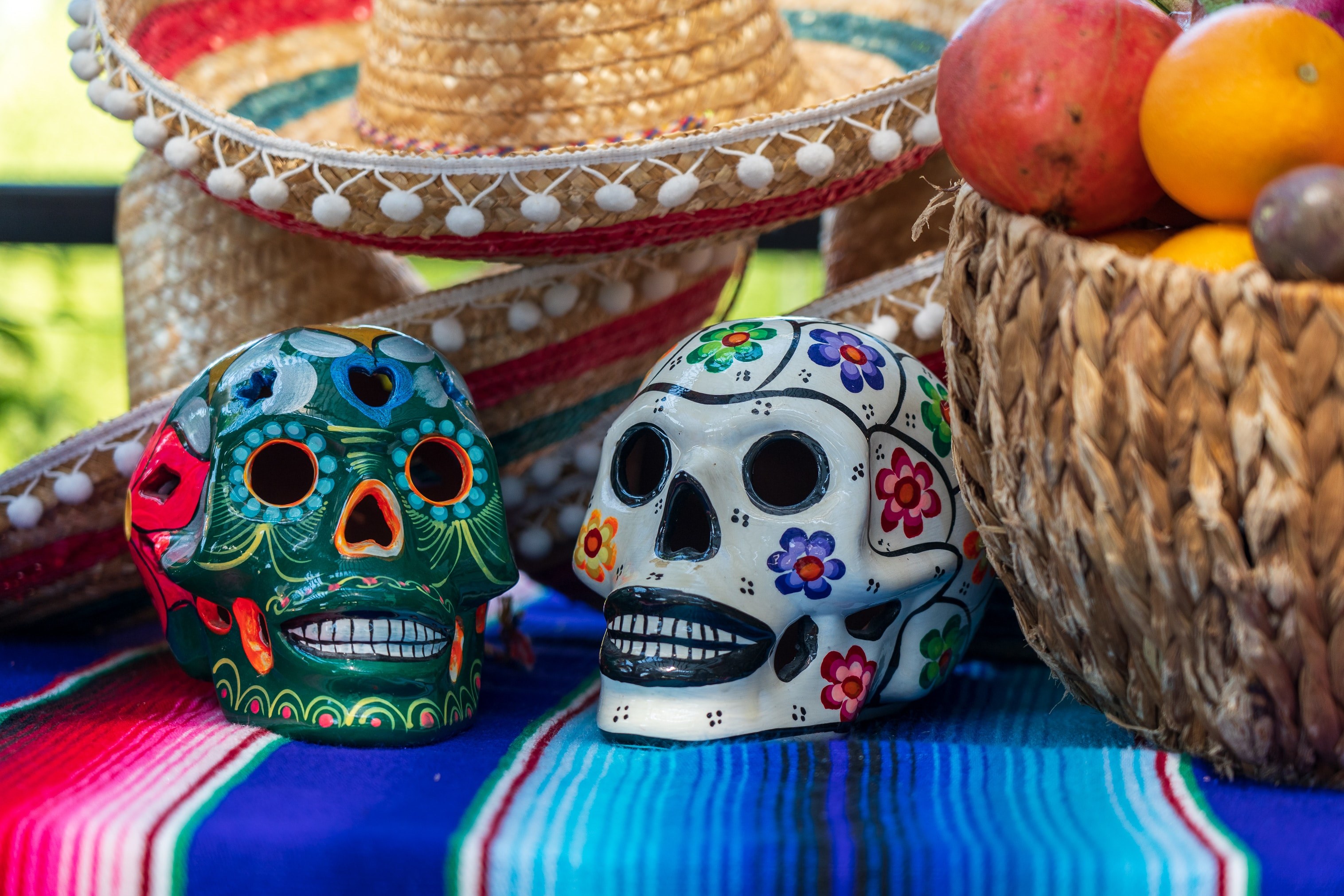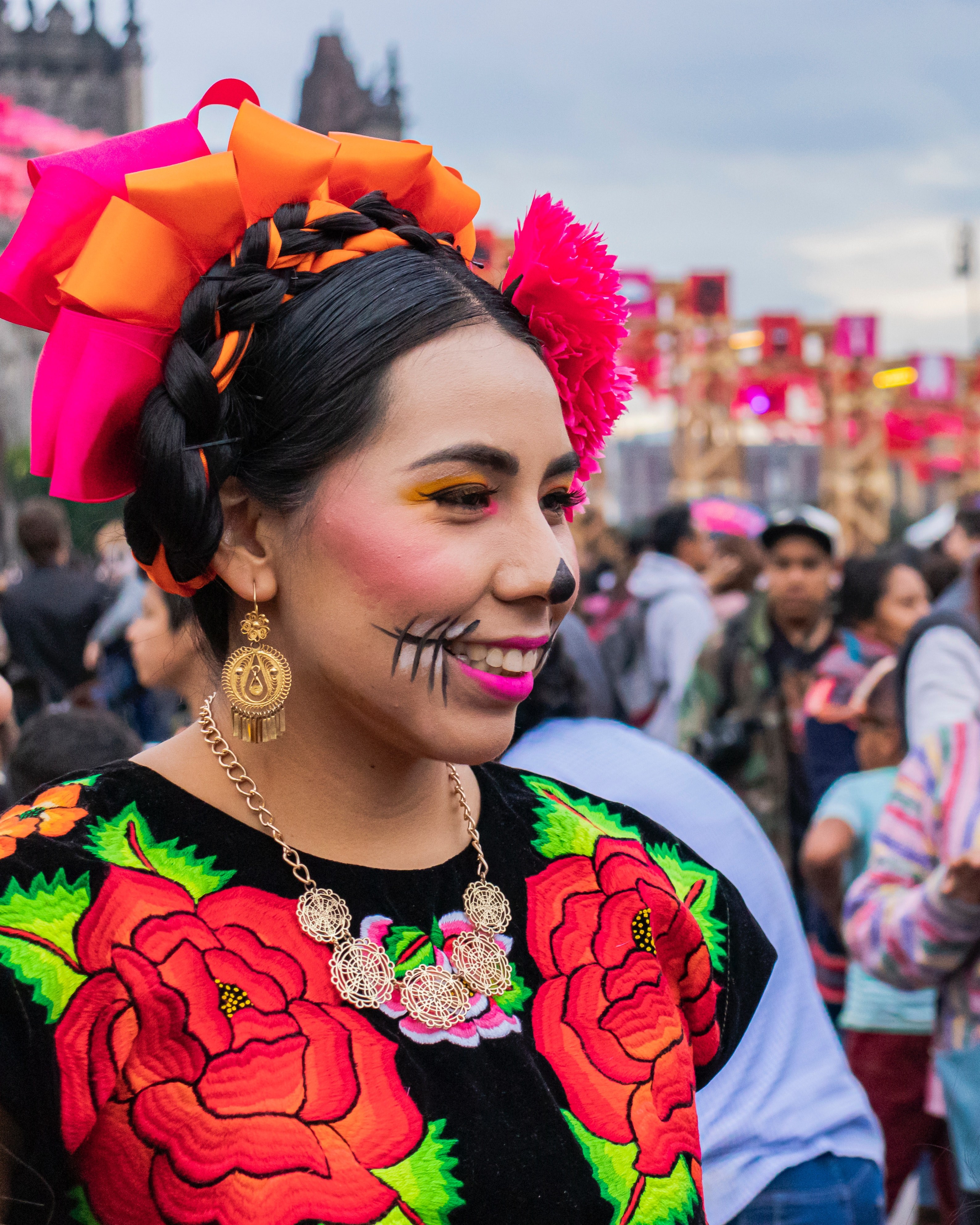Day of the Dead Festival – A Celebration of Life and Remembrance

Every year, between 31st October and 2nd November, Mexico comes alive with one of the most vibrant and culturally rich celebrations in the world; Dia de los Muertos or, as it is more commonly known, the Day of the Dead Festival.
This colourful and spiritual festival is a unique blend of tradition and Catholicism, offering a beautiful and moving way to honour and remember those who have died. In this blog post, we'll take a closer look at the Day of the Dead festival and explore its customs and significance.
Where did Dia de los Muertos originate?
The roots of Dia de los Muertos can be traced back to ancient Mesoamerican civilisations, including the Aztec, Maya, and Toltec cultures. They had a profound connection to death, viewing it as a natural part of the cycle of life and not something to be feared. When the Spanish conquistadors arrived in the 16th century, they attempted to suppress these traditions, before merging with Catholicism to create the modern version of Dia de los Muertos.
What symbols are significant in Dia de los Muertos?
- Sugar Skulls (Calacas)
Skeletons or Calacas are an iconic symbol of the Day of the Dead Festival. These colourful representations of the dead can be found in various forms, from paper mache sculptures to costumes. Sugar skulls are edible treats decorated with bright icing, which often bear the names of living or deceased loved ones and are exchanged as gifts.
- La Catrina
La Catrina, a stylishly dressed skeleton woman, has become the most recognisable figure of Dia de los Muertos. Created by the Mexican artist José Guadalupe Posada in the early 20th century, La Catrina symbolises the idea that death is the great equalizer, as it comes for everyone regardless of their social or economic status. You'll often see people dressed as La Catrina during the festivities.
- Ofrendas and Altars
At the heart of Dia de los Muertos are the ofrendas (known as offerings) and altars that families create to honour those that have died. They are typically adorned with marigold flowers, candles, incense, and sugar skulls in addition to their favourite foods, beverages and personal mementos. The ofrendas serve as a way to welcome the spirits back to the world of the living and to provide them with the comforts they enjoyed in life.
- Marigolds and Monarch Butterflies
Marigold flowers are believed to guide the spirits to the ofrendas with their vibrant colour and scent. Monarch butterflies, which migrate to Mexico during this time, are considered the souls of the departed returning for the festival.
Why is Dia de los Muertos important?
The most important thing to understand about Dia de los Muertos is that it's a celebration of life, not an occasion for mourning. It's a time for families to come together, share stories, and express their love and gratitude for the lessons and memories left behind by the deceased.
Dia de los Muertos is a testament to the resilience of cultural traditions and the enduring connection between the living and the dead. It's a celebration that reminds us to cherish life, honour our ancestors, and embrace the cycle of existence with joy and respect.

Day of the Dead Festival 2023 : Photo by Fili Santillán on Unsplash







